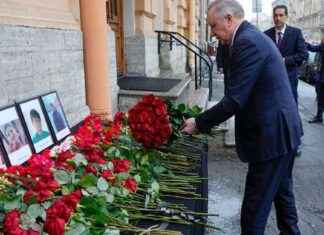Sylvain Creuzevault is in great shape. At 41, the director is presenting two mirrored shows: The Aesthetics of Resistance, a formidable fresco created in Strasbourg in May, based on the book by Peter Weiss, and Edelweiss (France Fascisme). Both explore the period of the Second World War, from the point of view of the Eastern Front and the Resistance on the one hand, and from that of France’s collaboration on the other.
In addition to my passion for history, this genealogy was also a methodology. Everything starts from the wish to capture, and therefore to originate, what I have before my eyes today. The way we socially live in the 21st century sometimes has its origins very far away, without us necessarily being aware of it. The neoliberal world in which I grew up, and even in which I was born, this world which is the matrix, the language of our generation, has specificities: it is a material thing which is produced, not a natural thing. If we want to understand its mechanisms, we have to go back to the origins. Carrying out this genealogy is therefore first of all a way of reading the present, of trying to make this neoliberal world which constantly produces smokescreens legible for us.
The theater that we have tried to offer from the beginning consists of seeing how ideas move, or rather how we move ideas, how we manage to make them play. This art is a wonderful tool for probing how an idea poisons a body, affects it, in enthusiasm or in the worst. What sad, morbid, or on the contrary invigorating passions ideas produce on beings, how these beings relate to each other according to them. How bodies adhere to a conviction, and what is the danger of the force produced by this adhesion. How an individuality blends and dissolves into the group, with real dangers or total ecstasies. The theater has for itself that it allows all these questions to be brought to life, through play. In this we are also part of a theatrical genealogy passing through Bertolt Brecht, Heiner Müller or Antoine Vitez: forms of the theater of distance .
Well already because I have no doubt that we are heading towards the worst, today, in Europe and in France, with the reappearance of various forms of fascism. And then, it was contained in this same genealogical work: being, at heart, of Brechtian parentage, I arrive at this observation, made by the German playwright, that fascism is of all times. Brecht says that “fascism is not the opposite of democracy,” but that it is “democracy in a state of crisis.” In other words, under given social conditions, the advent of a fascist movement is possible at all times. It is not just the product of the 20th century. And, moreover, we tend to forget it, but fascism is itself a revolutionary movement.
This pretty mountain flower gave its name to a German military march written by the Nazi composer Herms Niel. Then this march was taken up and made French by the Legion of French Volunteers Against Bolshevism, created in 1941 by the most ultra collaborators at the time of the breakdown of the German-Soviet pact. A small, slender, fragile flower, it is undoubtedly a fantasy of purity. And then it’s quite kitsch, too. Fascism developed a whole romantic-kitsch imagination.
First, it must be said that the characters are inspired by real figures, but are not them. They are what we call “grimaces”: we sometimes move away greatly from the biography, for theatrical purposes, to bring contradictions into play. And so we have the “grimaces” of Pierre Drieu la Rochelle, Louis-Ferdinand Céline, Robert Brasillach and Lucien Rebatet on the side of intellectual artists, and those of Pierre Laval, Otto Abetz, the German ambassador in Paris, of Fernand de Brinon, Marcel Déat and Jacques Doriot on the political side. This question of the relationship between artists and politicians particularly interested me: how intellectuals lead the game of verbal, journalistic extremism, and how politicians work on collaboration. We are particularly focusing on Laval, because one of the big questions is to understand why the Vichy regime became despicable and chose the worst in the context of the armistice.
Yes, of course, and this seduction must be there, moreover, to be able to follow the path of reflection that I am proposing. I trust the spectators to understand what our perspective is. This beauty of the devil which can be that of certain texts, of Drieu or Rebatet in particular, their seduction, I try not to put it too far away, in any case not to denounce it, which would be ineffective. Because the level of historical conflict in which we are does not allow me to act as if we were in a world where we could withdraw from this question: the seduction we are talking about, it is current, it is strong, it acts powerfully Today. Not only in the political field, in the cultural field too. The dramaturgical construction is designed to create dissension, to question, to put people on alert, not to confirm powerlessness or incapacity.
We are not scholars, we are players, actors. Monkeys [Sylvain Creuzevault titled his company Le Singe]. We allow ourselves this to make the mechanisms shine, to show the conflicts, the contradictions, how they clash and how we overcome them or remain poisoned by them. It’s a form that I like because it trusts the viewer’s gaze. I do not excuse barbarity by “farming” it, but on the other hand it allows me to look at it differently than with the eyes of fear. Farce is a way of escaping the pitfall of the pamphlet or the theatrical mass. I never imagined that theater could do more than it can, I always have a little “joke” side.






